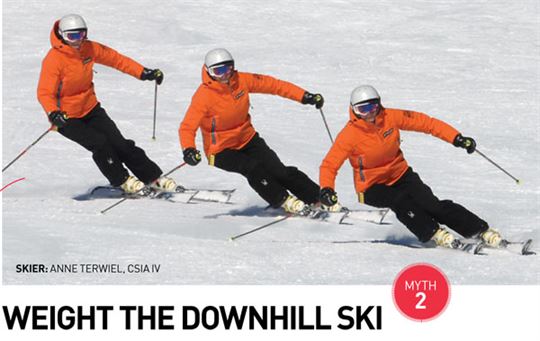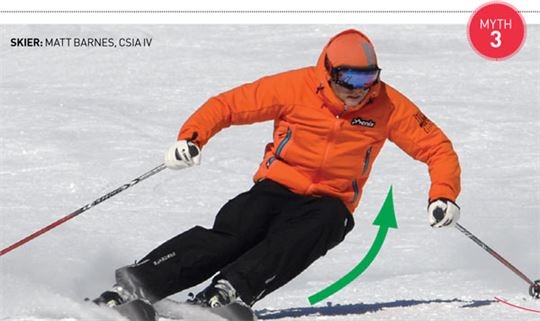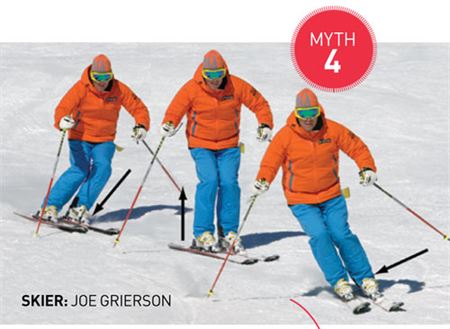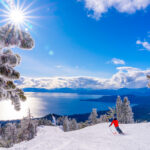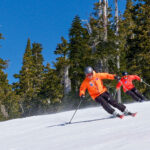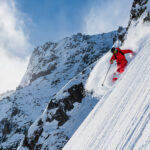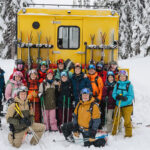MYTH 1 – GOOD SKIERS USE A WIDE STANCE
A common error seen in good skiers who are trying to improve is skiing with feet too far apart. It can be confusing because when you look at the photos here, the feet are fairly far apart even though the stance is narrow. A narrow stance promotes weight on the downhill ski and allows the lower body to achieve the angles necessary for good ski performance.
Think of lifting the inside ski upward as the turn develops, but keep the legs together. It’s not just a champion’s technique for groomed snow—it also works in bumps and powder.
by Martin Olson, CSIA Level IV, in December 2014 issue
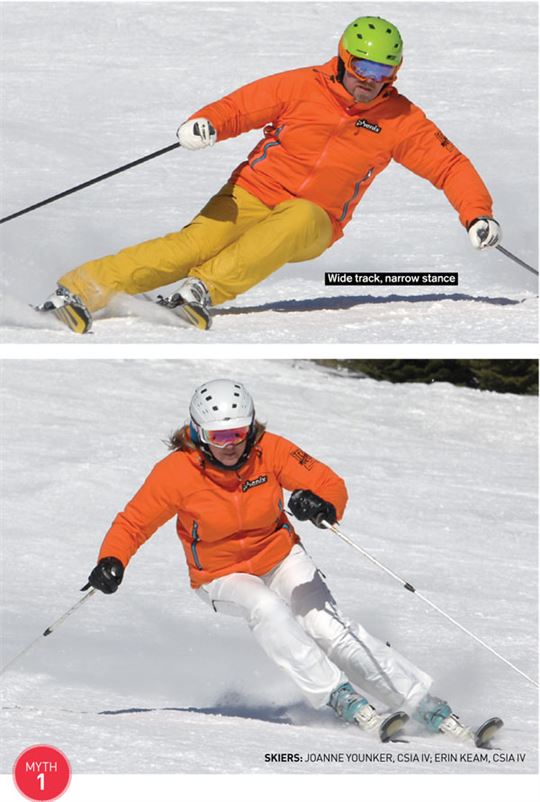
MYTH 2 – WEIGHT THE DOWNHILL SKI
There are two ways to transfer weight from one foot to the other:
- deliberately shift weight by bending the torso over and/or moving the arms;
- lift one foot so weight is automatically transferred to the other foot.
For some strange reason, traditional teaching tactics usually promote some version of option 1. Just as strange, the world’s best skiers usually use some version of option 2.
In the photo sequence, Anne has most of the weight on the downhill ski (skier’s left ski), but believe it or not, she isn’t trying to do that. She’s controlling the pressure entirely with her right ski. By keeping the stance narrow and relaxing the right leg, it’s much easier to balance and the hips will naturally move inside to achieve advanced skier angles on the snow.
Find a moderate groomed slope and use a bit of speed to experiment with this technique. Your skiing is going to jump quickly two levels. Don’t think about pushing against the snow—think about the snow pushing against you as you relax into angles and the ski bites.
MYTH 3 – PINCH AT THE WAIST
Trying to create a pinch in the waist on the downhill side is completely off track for skiers who want to generate the kind of powerful turn seen here. It’s counterintuitive, but developing effective angulation depends largely on the efforts of the uphill (skier’s left) side of the body. Make a conscious effort to lift the inside ski and leg, lift the inside hip, and lift the inside shoulder. Notice how the inside arm is strongly held up and forward, and the inside ski is lifted, not pushed, ahead. This focus can be practised at much slower speeds than shown here. It’s one of the keys to a powerful position and great ski performance.
MYTH 4 – EARLY WEIGHT TRANSFER
Think of a ski as having two edges, a big toe edge and a little toe edge.
- To make an effortless, no-stem initation, the key is to roll onto the little toe edge early, not pressure early (frame 1). Never try to start a turn from the big toe edge—that’s a recipe for stemming and rotating.
- Next, lift the inside ski slightly, which will transfer weight to the outside ski (skier’s left) as it’s rolled onto the big toe edge (frame 2).
- Continue to increase edge angle on the new outside ski by rolling the ankles forcefully to the inside of the boot and continuing to relax pressure on the inside ski.
Even an average Joe makes it look easier than it is, but this technique is worth mastering—it’s fundamental to advanced and expert skiing.
